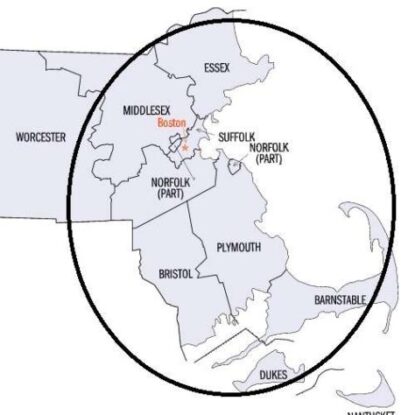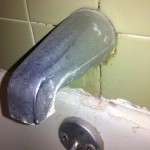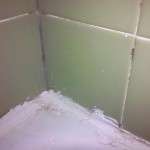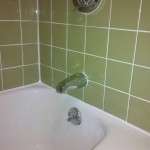- Boston green shower tile before regrouting close up spout
- Boston green shower tile before regrouting close up corner
- Boston green shower tile after regrout overall view
- Boston green shower tile after regrout close up corner
By the time you’re frustrated with your shower grout, you’ve already tried cleaning it like crazy, and no amount of scrubbing or cleaning chemicals makes much difference. It looks old, beat-up, worn out and maybe even mildewed – definitely not what you want in your shower! When cleaning alone doesn’t get the job done, it’s time for tile regrouting.
If you live in the Greater Boston area, including all the suburbs, we have an answer for you: Have the shower tile regrouted and then you’ll love it again! You can call or text us at 617-221-4002 and we’ll get you a quote right away.
The photos above were from a typical job in downtown Boston. The owners wanted their shower to look good, so they hired us to regrout the shower. First we scraped out old grout, scraped out old caulking, cleaned the tile and applied fresh grout and fresh caulking. By the end of the day, the shower looked like new and the owners were pleased with their ‘new’ shower! You can click on each photo for a close up look.
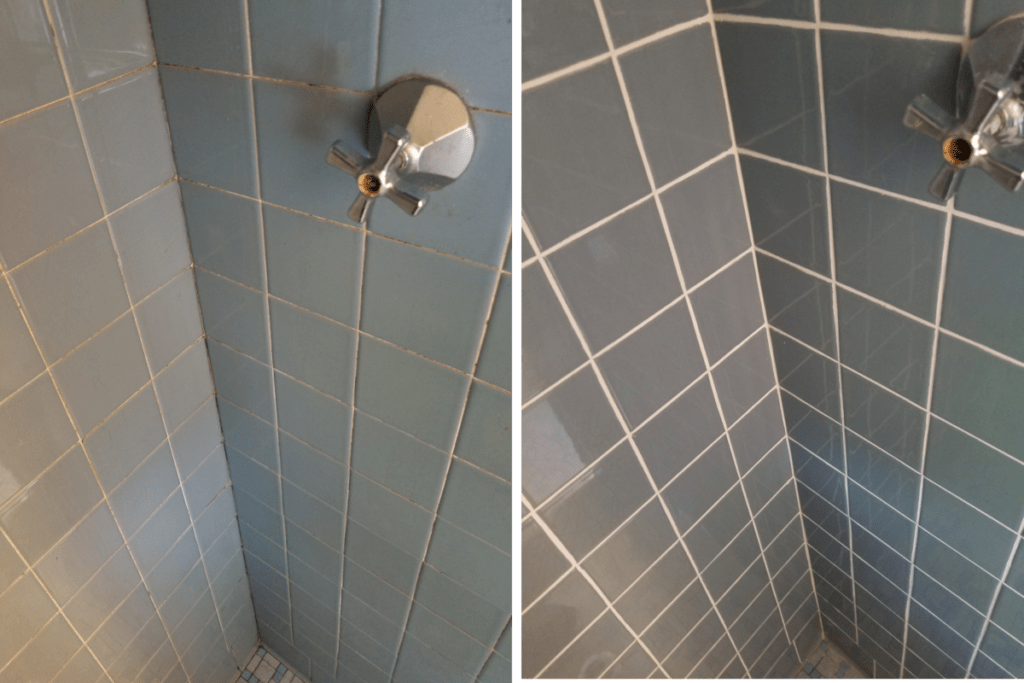
How The Process Works
We’ve been doing tile regrouting in the metro Boston area for years and we have a definite process – these are the steps we take to get you your quote and finished job:
- The first step is to get in touch with us, either by calling, texting or filling out the form below.
- We will ask a few questions about the tile to make sure it’s suitable for regrouting or color sealing
- Typically, it makes it much easier if you can also send us a few photos showing the overall size and layout of the area you’d like us to take care of
- We then put all our quotes in writing, usually by email
- We’ll also include enough references and job photos that you’ll be comfortable that we’ve done this before – no rookies involved here!
- If you decide to accept the quote, all we need to do is schedule the work
- Most shower regrouting jobs can be done in one day, but occasionally we need a second day
- Grout is dry to the touch overnight, but needs a full 24-48 hours before exposure to water
Once we arrive, we follow a fairly similar process, but the type of grout may affect how we proceed. For smooth unsanded grout on thin grout lines, the most straightforward approach to tile regrouting is to remove enough of the existing grout to form a channel for the new grout. (No one can remove all the old grout, and furthermore it’s not necessary to remove 100% of the old grout anyway).
For thicker grout lines, most often on floors, installers use grout with sand, sanded grout. You can feel the sand in it if you run your fingers along the grout lines. It feels rough like sidewalk cement. This type of grout is better to recolor than to pull out and replace. Why? Because sanded grout is so much physically harder than unsanded grout that efforts to remove it might backfire. How? Well, the extra firepower and force to grind out a sanded grout line can end up scratching the surrounding tiles quite a bit. The less risky option is to apply colorsealer to all the sanded grout lines. Colorsealer is a heavy, tinted sealer that bonds like crazy to rough, scratchy surfaces like sanded grout lines, but won’t bond to glazed tile. Looks the same as replaced grout and lasts just as long, without the need to risk any tiles.
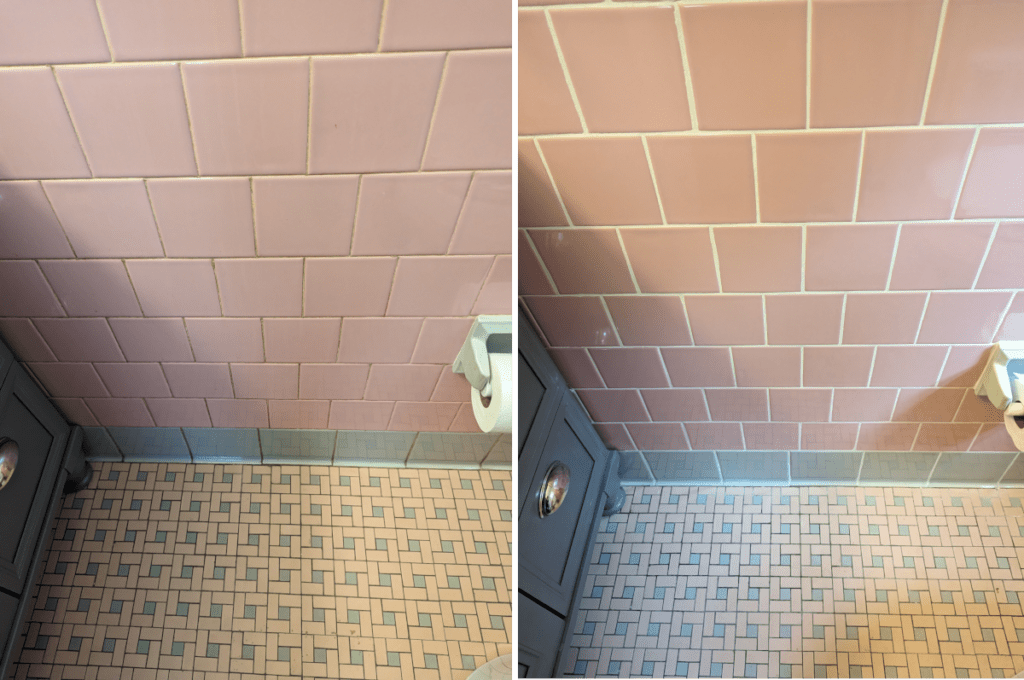
Frequently Asked Questions About Tile Regrouting
Q. What’s the difference between tile regrouting and ‘skimcoating’?
A. Skimcoating is putting a thin coat of unsanded grout directly on top of an existing grout line without trying to remove the old grout first. It may look great, but the problem is that it may not bond well. If it looks good at first, but the grout starts to flake off down the road a few weeks or months, then it’s not a long term solution.
Q. Will tile regrouting solve a leaking shower issue?
A. Not necessarily! Grout is not truly waterproof. So using it to promise someone a solution to a leaking problem is not honest. In our experience, most leaking problems are actually plumbing issues. We usually encourage folks who have leaking showers to contact a plumber first. After all, if the issue is a leaky plumbing valve, no amount of money spent on grout will fix the valve!
Q. How long will the new grout last?
A. If the installation is stable, not loose and wobbly, the new grout will last for years. Instability in the wall studs or floor joists can shorten the useful life of grout or caulking. We try to estimate how stable your tile is, but it’s a judgment call and not a surefire thing.
Q. What type of tile can you regrout?
Tile regrouting works for ceramic, porcelain, marble, granite, or other natural stone tiles.
Q. Are there types of tile that can’t be regrouted?
A. Yes, there are. We are very careful about regrouting tile shower floors. Because of the Massachusetts state plumbing code, shower floors in the state are allowed to trap moisture directly below the shower floor. So new grout on a shower floor can be very slow to dry, sometimes taking days to dry and sometimes weeks. Also, some mosaics are shaped so the grout lines are broken up, so it’s impractical to try to remove old grout. Think of hexagon shaped tiles…
Q. What if we have a cracked or broken tile – can that be replaced at the same time as the tile regrouting is scheduled?
A. Yes, that’s a logical time to do both. Assuming you have extra original tiles leftover from the initial installation. If not, it may not be possible to find a matching tile.
If you’d like a quote on regrouting tile, (shower, wall, or floor), give us a call or text us at 617-221-4002 or fill out the form below.
Our contact information:
Act One – Marble and Tile
15 Main Street # 138
Watertown MA 02472-4403
https://cleanpolishmarblegraniteboston.com
617-221-4002 Text or Call
